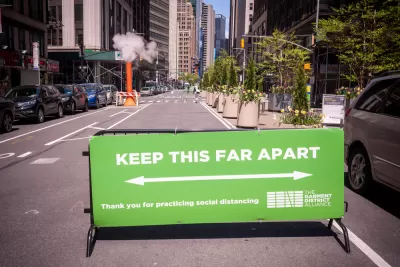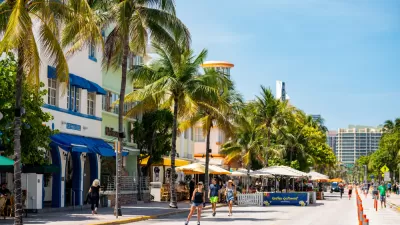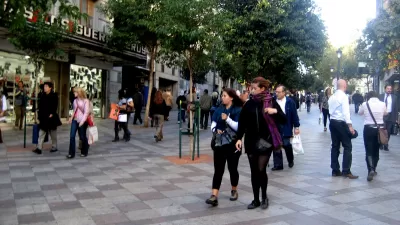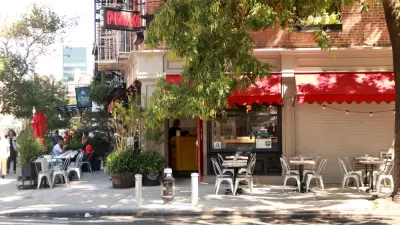With more people getting back in their cars, can pedestrian-oriented open streets survive?

When the pandemic forced restaurants to find creative ways to serve customers and people found themselves having to stay safe and sane in their own small neighborhoods, the concept of "open streets" caught on around the country as communities sought new ways to reclaim street space from cars and provide more safe outdoor space for residents. However, with COVID-19 restrictions starting to lift, writes Danielle Mudio for Politico, many formerly "open" streets have reverted to their original use.
At the height of pandemic planning, after initial reluctance from Mayor De Blasio, New York City pledged to pedestrianize 100 miles of roadway. Community groups took matters into their own hands, too: in Jackson Heights, volunteers raised $20,000 to create a 26-block open streets zone on 34th Avenue. But of the 83 miles of roadway that were eventually opened for pedestrian use during the pandemic, 22 have since shut down; "half were closed permanently while the rest shuttered temporarily for the winter, said Mitch Schwartz, a spokesperson for the de Blasio administration."
While most open streets programs were managed by volunteers, advocates say that "a redesign of city streets to include more permanent barriers, new signs and extra seating is necessary to keep cars off the roads and ensure they can be safely used by all." Because the programs often require "heroic or unusual effort by the community," writes Mudio, not all neighborhoods have the resources to maintain open streets programs without assistance from the city. Now, a coalition of "roughly 60 transportation and neighborhood groups" is calling for the city to "dedicate resources to support volunteers, provide amenities like improved barriers and provide daily programming activities." For their part, the city claims they are "considering a model that would provide reimbursement funding and technical assistance to community partners who lack resources" to implement and maintain open streets.
FULL STORY: Open Streets closed: Cars are reclaiming city blocks set aside for recreation

Planetizen Federal Action Tracker
A weekly monitor of how Trump’s orders and actions are impacting planners and planning in America.

Maui's Vacation Rental Debate Turns Ugly
Verbal attacks, misinformation campaigns and fistfights plague a high-stakes debate to convert thousands of vacation rentals into long-term housing.

Restaurant Patios Were a Pandemic Win — Why Were They so Hard to Keep?
Social distancing requirements and changes in travel patterns prompted cities to pilot new uses for street and sidewalk space. Then it got complicated.

In California Battle of Housing vs. Environment, Housing Just Won
A new state law significantly limits the power of CEQA, an environmental review law that served as a powerful tool for blocking new development.

Boulder Eliminates Parking Minimums Citywide
Officials estimate the cost of building a single underground parking space at up to $100,000.

Orange County, Florida Adopts Largest US “Sprawl Repair” Code
The ‘Orange Code’ seeks to rectify decades of sprawl-inducing, car-oriented development.
Urban Design for Planners 1: Software Tools
This six-course series explores essential urban design concepts using open source software and equips planners with the tools they need to participate fully in the urban design process.
Planning for Universal Design
Learn the tools for implementing Universal Design in planning regulations.
Heyer Gruel & Associates PA
JM Goldson LLC
Custer County Colorado
City of Camden Redevelopment Agency
City of Astoria
Transportation Research & Education Center (TREC) at Portland State University
Jefferson Parish Government
Camden Redevelopment Agency
City of Claremont





























